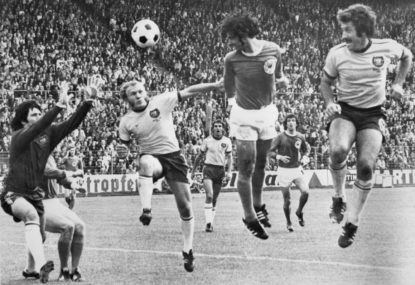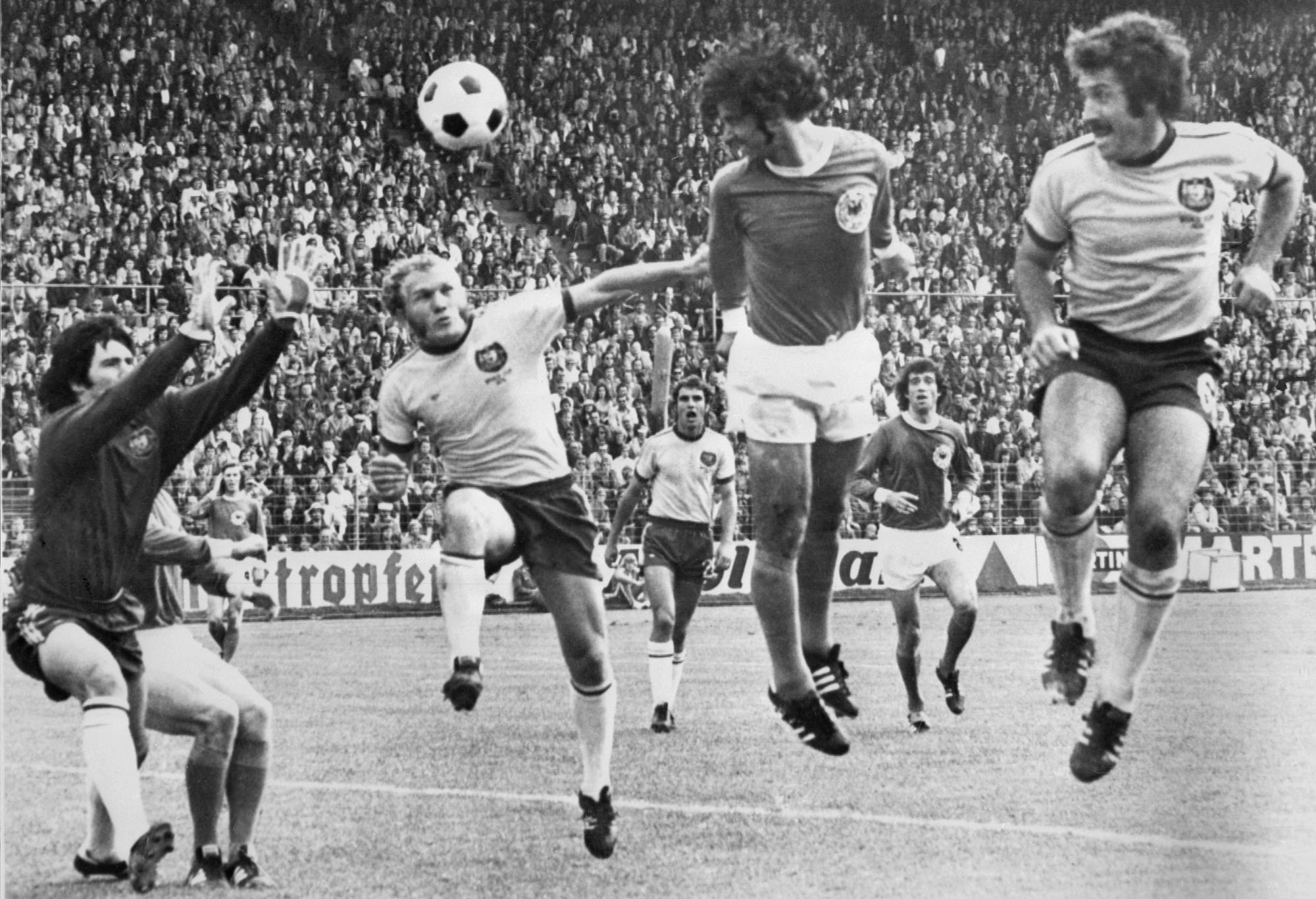Controversy as Villa keeper handed second yellow for shootout crowd taunting... but isn't sent off
Emi Martinez was saved by a new rule that resets yellow cards at the end of extra time, meaning his second yellow for taunting…

Like most rough and tumble sport loving kids, I took my fair share of head knocks.
Two significant scars dramatically affect my hairstyle choice to this very day, thanks to more hair on the left side of my head than the right and around five or six concussions are unpleasant memories of a life lived through sport.
Interestingly, the concussions came about across a variety of different sports. One stemmed from a freshly unwrapped Kookaburra cricket ball that thudded into my temple as I opened the batting at Marrickville Oval.
The most significant occurred when rising for a mark during a knockout Australian rules game in Sydney’s west. That one is hazy and the gap in memory is alarming.
For anyone who has been lucky enough to avoid a concussion in their sporting life, the best explanation I can give is that concussion is the disturbing void between competing on the field and waking up laying in a foreign environment with an enormous headache.
What happens in between is a mystery and potentially damaging.
Personal experience has taught me that it is not just the rugby codes and Aussie rules around which medical experts and rule makers need to adjust their thinking in regards to the human brain.

Josh Dugan is helped from the field with concussion. (AAP Image/Dan Himbrechts)
Years back, as I headed the ball clear against St Mary’s Cathedral School on one of the playing fields outside the Sydney Cricket Ground, something went wrong.
The wind had seen the ball carry a little further than I had expected and the sphere connected more toward the top of my head than planned. I felt dazed, confused and experienced intense pain through my neck and spine.
I threw up at the end of the game.
Recently, University of California Professor and respected forensic pathologist Dr Bennet Omalu called for adjustments in the way football is played. In essence, his recommendations called for the removal of the use of the head in junior play.
Dr Omalu alluded to the fluidity of movement of the human brain inside the skull when firm contact is made and the potential danger, particularly to youth players, of excessive heading of the ball.
The potential and life threatening outcome, according to the man who first found the concerning signs of damage in the brain of former NFL footballer Mike Webster, is chronic traumatic encephalopathy or CTE.
CTE is essentially a form of dementia that causes alarming rates of depression, suicide, substance abuse and cognitive impairment. Omalu’s research found Webster was suffering from dementia pugilistica, something many assumed was unique to boxers, yet his research has seen it become one of the most significant issues facing sporting administrators, both now and in the future.
Athletes often live hidden lives once removed from the game, sometimes spiraling into depression, anxiety, addiction and sheer suicidal terror. The data suggests that in some cases, these thoughts and lifestyle choices are evidence of the existence of CTE.
Dr Omalu’s recommendations and any potential changes made to the rules and tactics used in a game of football could be historic and game changing; both for future victims and the game itself.

Gerd Mueller scores against Australia in 1974 (Staff/AFP/Getty Images)
The Nigerian-born U.S citizen is unforgiving in his calls for a modified version of the game for 12-18 year-old players, where heading of the ball is forbidden. His respected medical opinion informs his categorical claim that ‘no child under the age of 18 should be heading the ball in soccer.’
While many sports have taken reactionary measures to address the issues surrounding head trauma, brain injury and concussions, it has been a long time coming with reluctance delaying the speed of change. Similarly, football will most likely not be banning the heading of the ball in junior fixtures in the short term future.
However, with an unknown number of former footballers around the world experiencing symptoms of CTE, whether identified or not, the certified cases of Jeff Astle and Rod Taylor will not be the last examples of which we hear.
As near as I can tell, footballers use their feet, thighs, torso and heads to control and distribute the ball. Without the head as an option, the fundamentals of the game would be significantly impacted.
The tactical approach to corner and goal kicks would require immediate adjustment, as would the art of defending a long ball into the box. Taking the ball out of the air with either an overhead kick or a well-timed volley could become the two most valuable assets of the player of the future.
[latest_videos_strip category=”football” name=”Football”]
The existence of the stoic defender who stands tall at the back, repelling cross after cross with expert use of the head would cease. The ability to bring the high or bouncing ball to the deck would become the primary method of clearing danger at the back.
It is hard to imagine what the beautiful game would look like without a crisply struck header that thumps into the back of the net, or the hard won, aerial challenges in the centre of the park as player’s battle for control.
Many will fear such a discussion; citing personal choice and casting doubt on football’s responsibility as opposed to natural causes. Yet it appears change is indeed coming.
As sport often proves, the games we play survive and morph as culture and community expectations change.
Football will no doubt do the same if, one day, brain injuries and CTE eventually bring about rule changes.